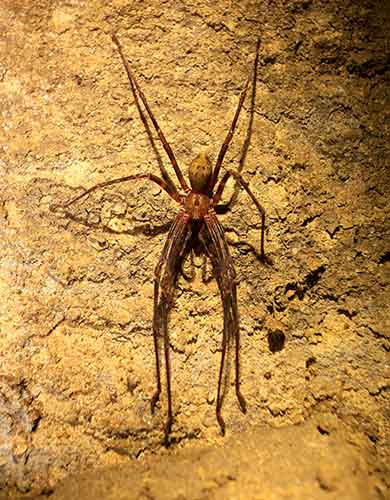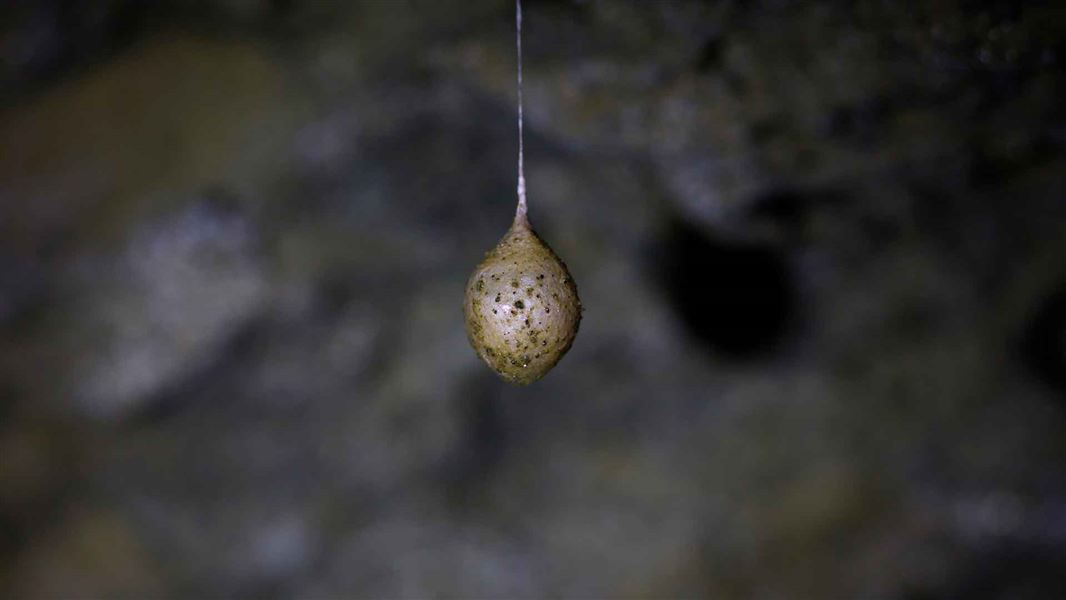Archived content: This media release was accurate on the date of publication.
Date: 01 June 2022
Crazy Paving Cave is home to the rare and unusual Nelson cave spider/Spelungulae cavernicola. With a leg span of 13cm and a 3cm long body it’s New Zealand’s largest spider.
Senior Biodiversity Ranger Scott Freeman says surveys have shown spider egg sac numbers decreasing in the cave which may be due to the number of human visitors.
“The number of spiders seen have actually increased from about 2019 onwards, possibly due to a decrease in visitor numbers associated with COVID. However, only one egg sac has been seen since 2018.

Nelson cave spider
Image: Richard Rossiter | DOC
“Breeding is the real long-term driver of the population so we want to close the cave to see if this will allow breeding to improve. Closing the cave means we can monitor the spider population’s response to the removal of human visitors.”
Nelson cave spiders are also found in Golden Bay. They are protected by the Wildlife Act 1953.
They live near cave entrances rather than deep in caves and dine mostly on cave wētā finding their prey by vibration.
The young are born and raised in egg sacs which hang from the cave ceiling of the cave almost like small golf balls. Each sac can contain up to 50 small spiders.
Nelson cave spiders are thought to be directly descended from the earliest true spiders and may be the missing link between primitive spiders - from the time of Gondwana 350 million years ago - and modern spiders.
Scientists have estimated that baby Nelson cave spiders take two to three years to mature. Most other spiders complete their entire life cycle in a year.
Crazy Paving Cave will close for visitors from today (1 June 2022) for 12 months.
Futher information
Crazy Paving Cave gets its name from its floor of ancient, fragile, fine deep sediment which has dried out slowly, cracking and curling into what looks like large, distorted paving stones.
It’s a dry cave where the sediment has stayed in place unchanged for hundreds of years. It’s like a time capsule holding information about what life was present when water once washed into the cave.
Contact
For media enquiries contact:
Email: media@doc.govt.nz
